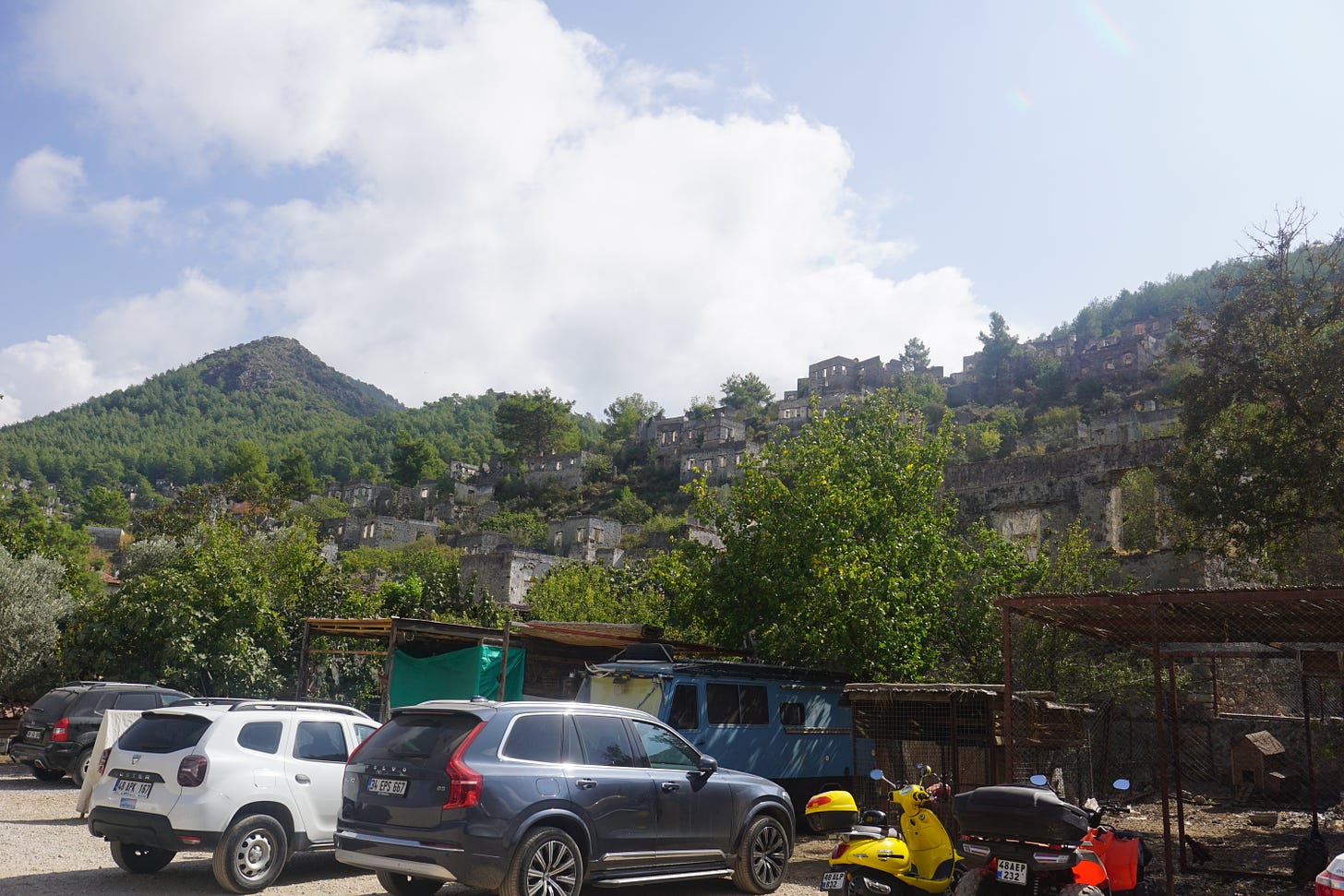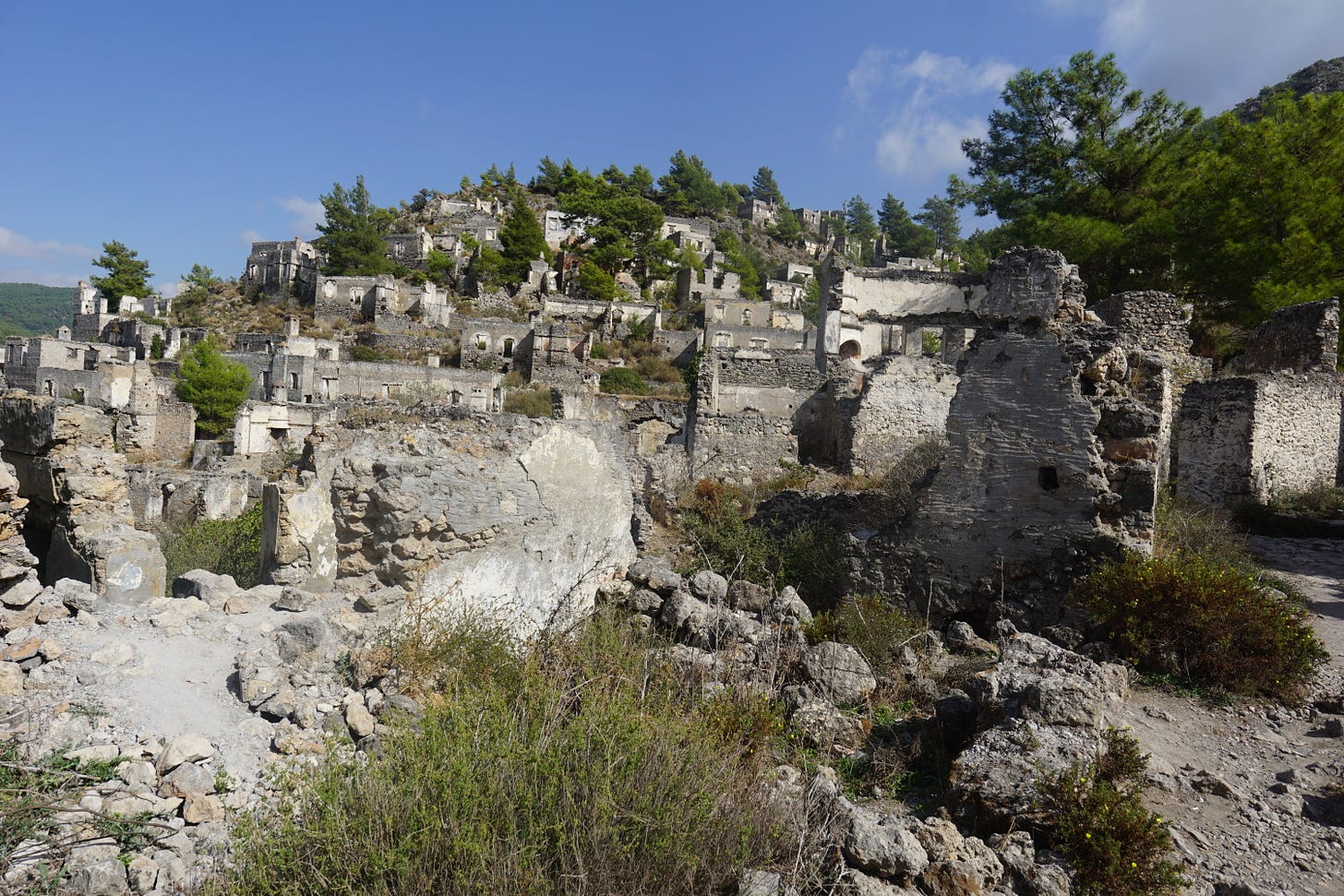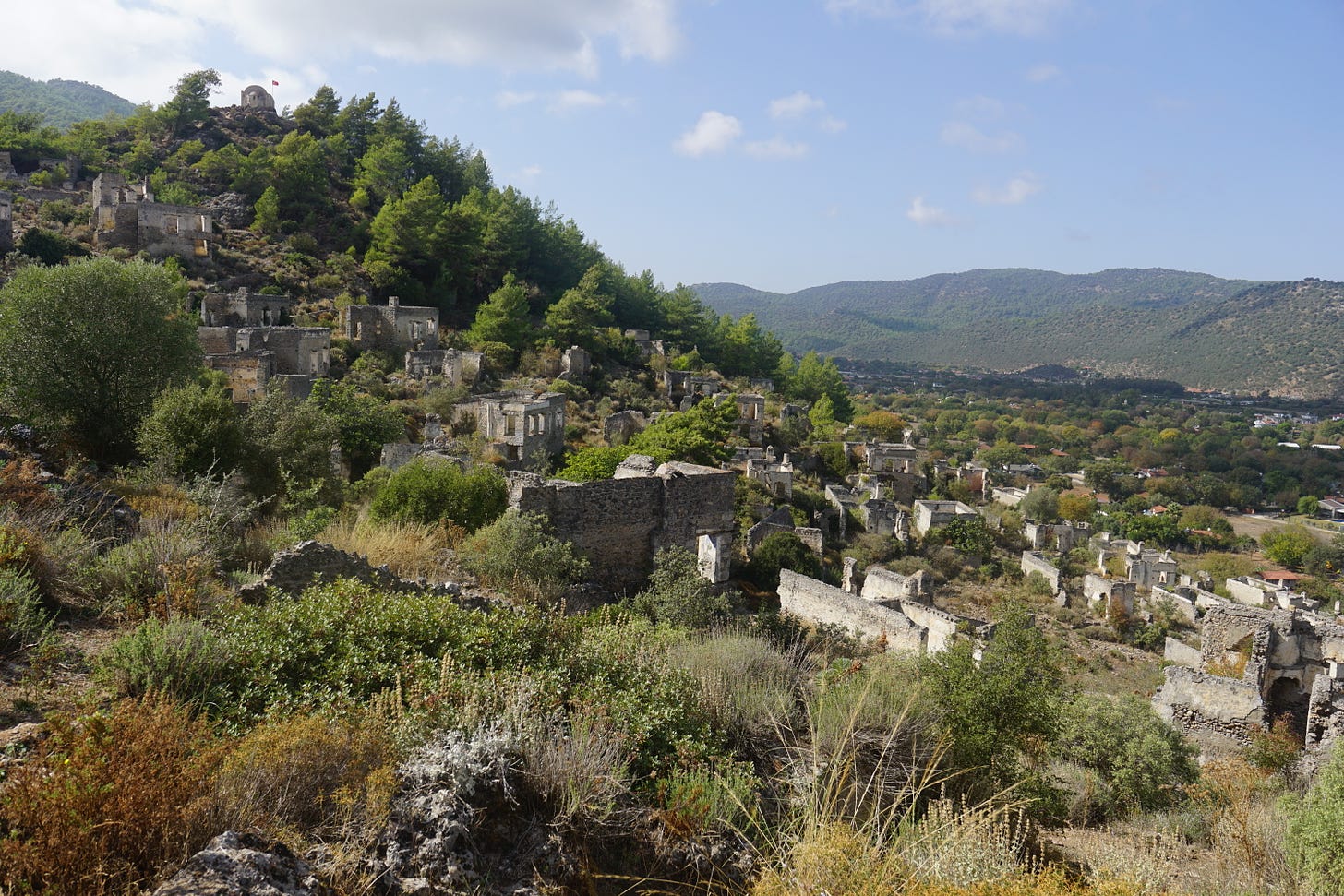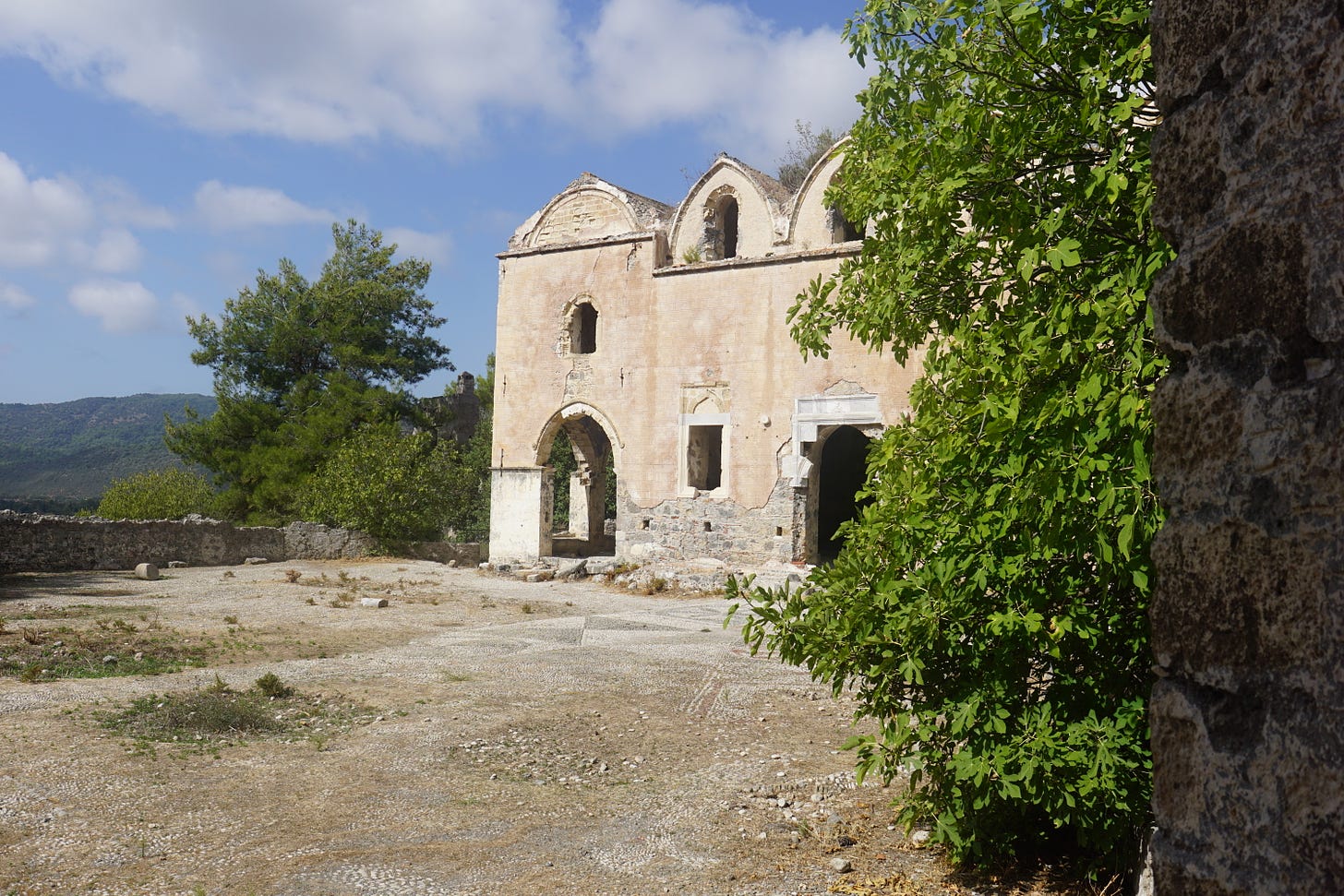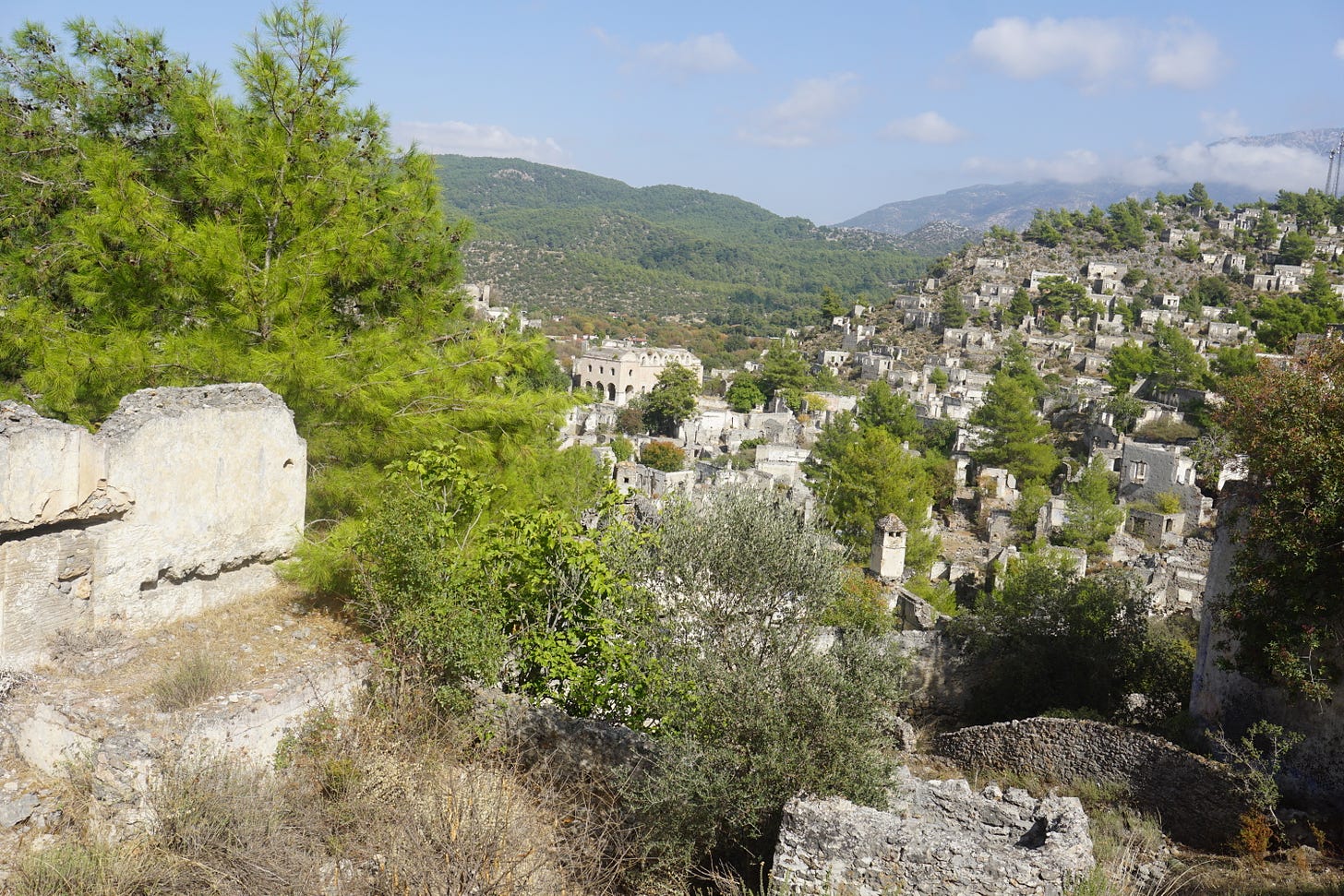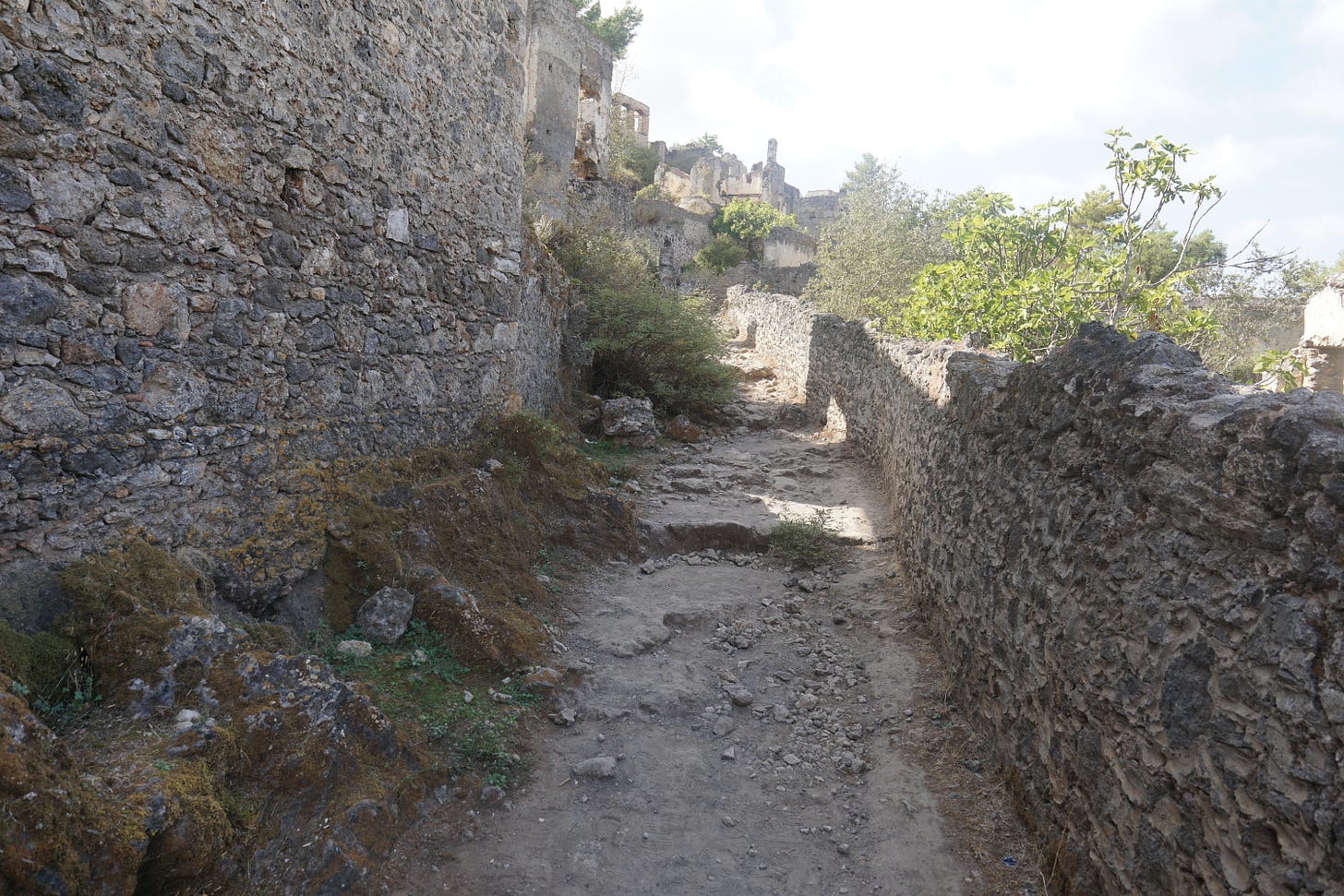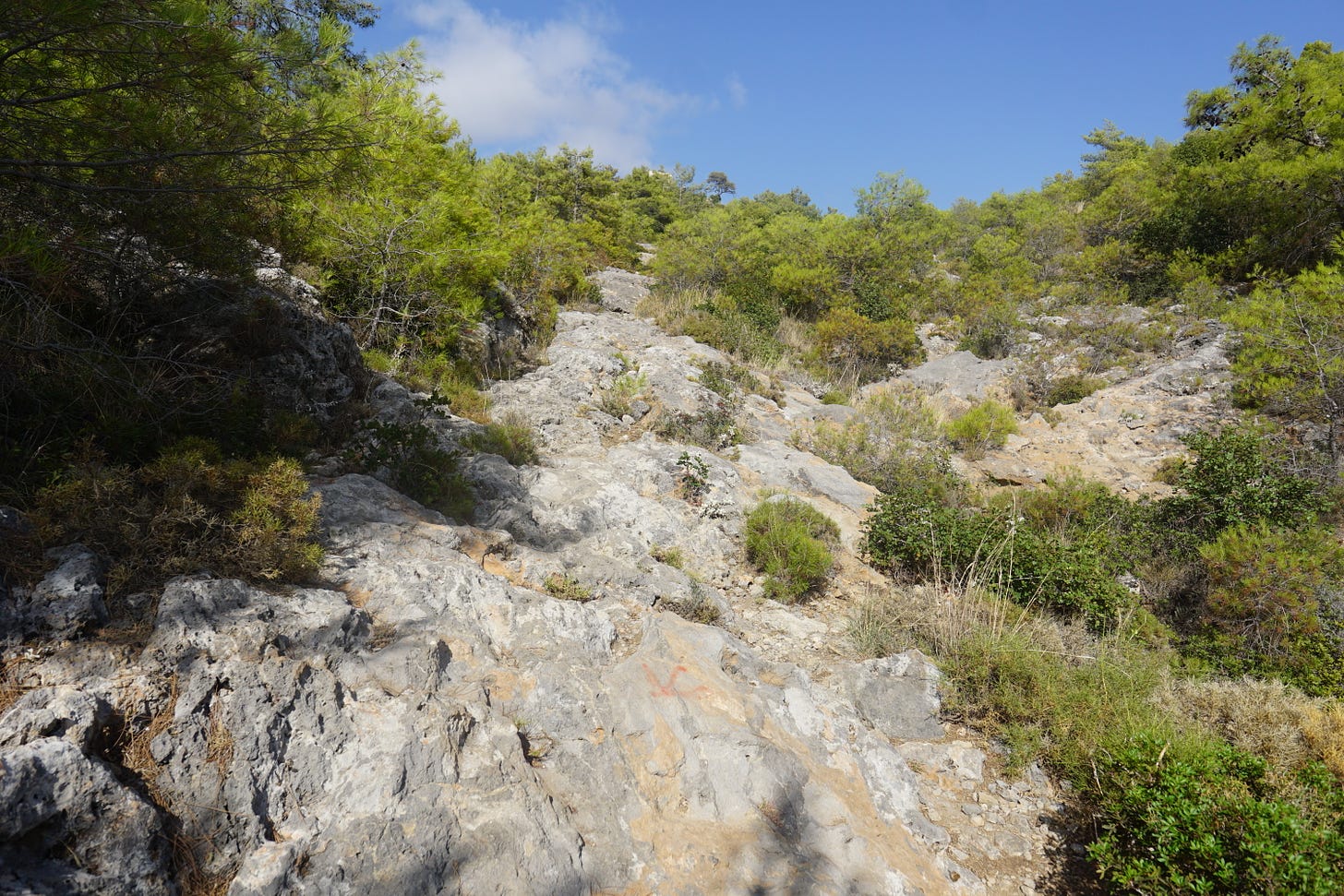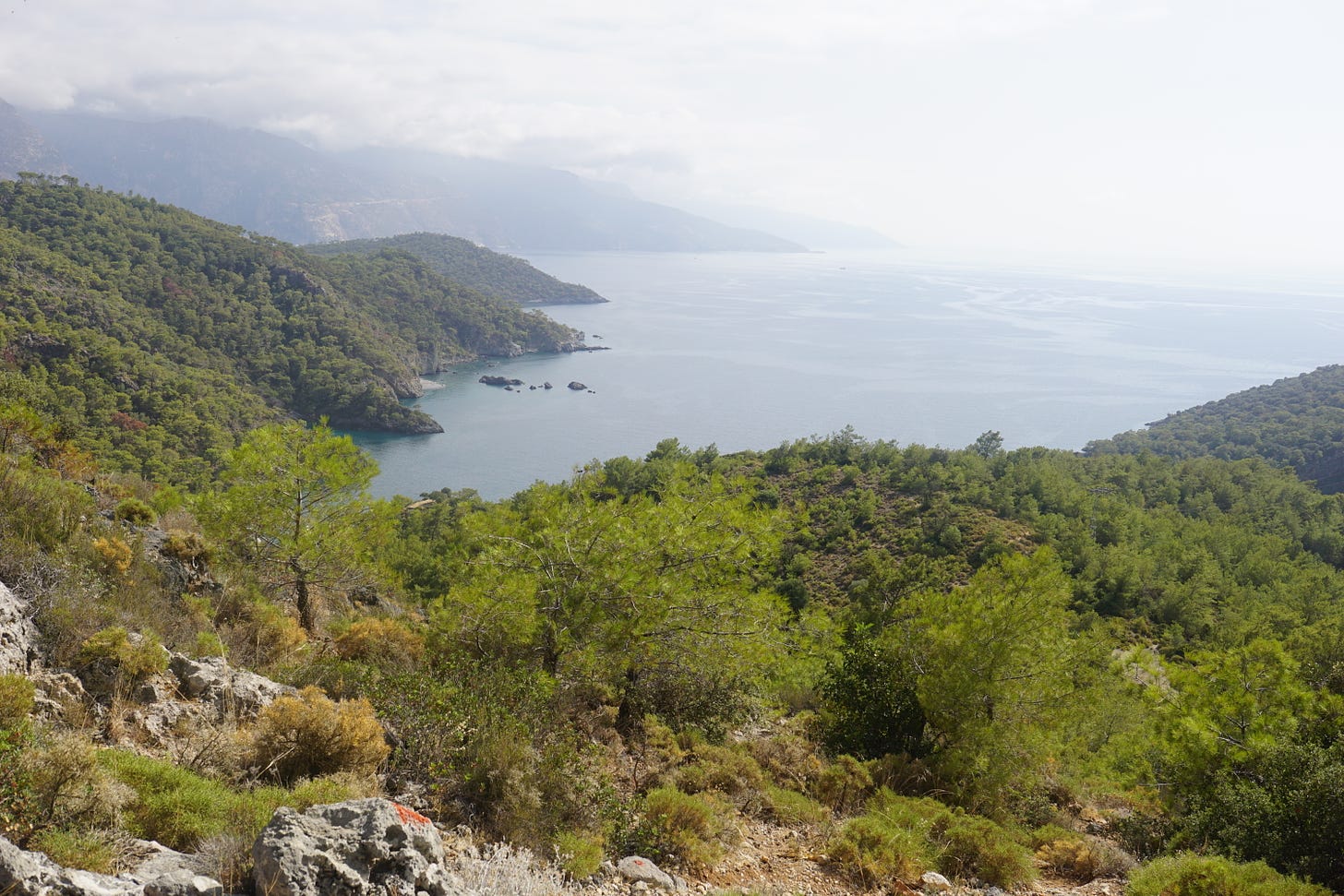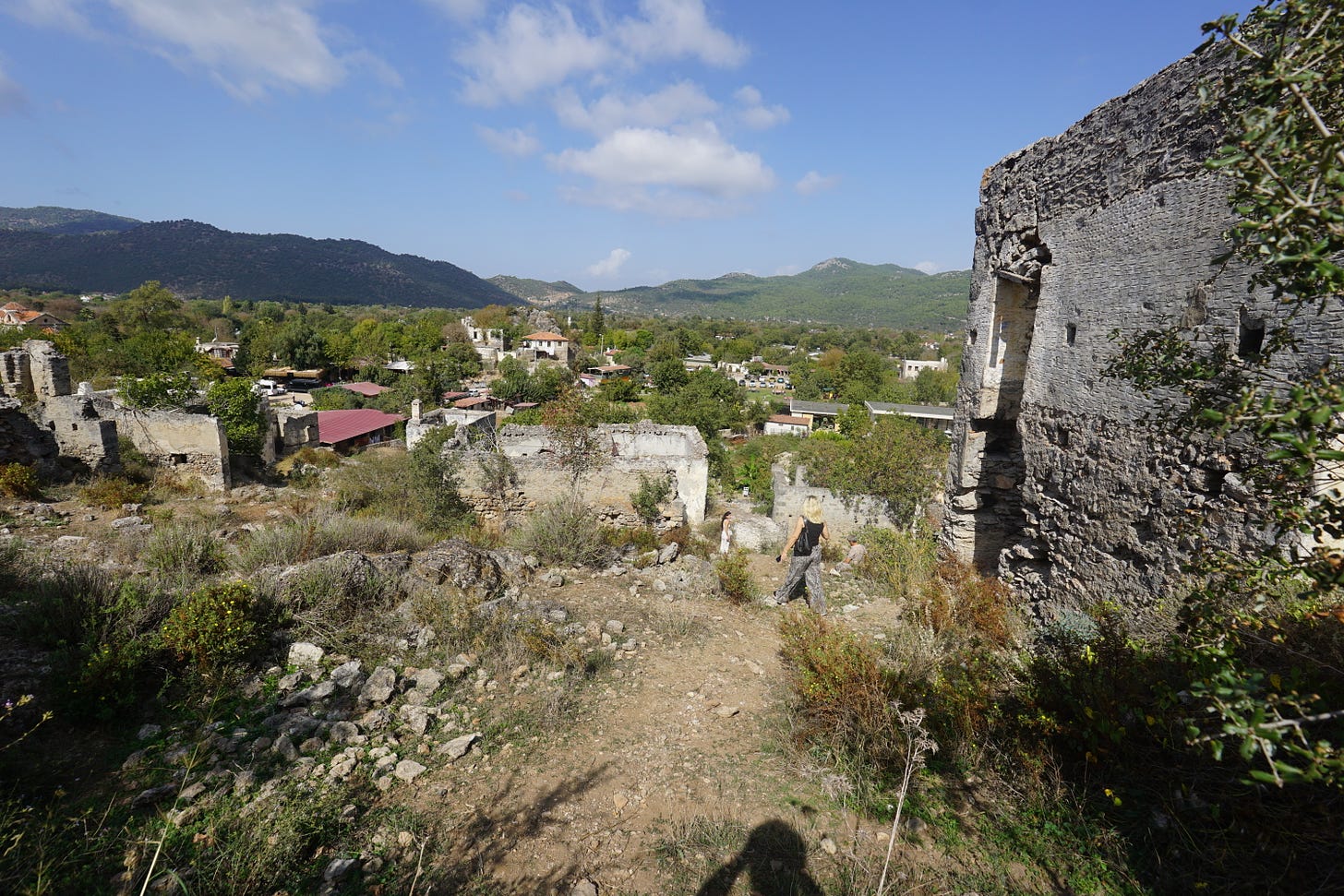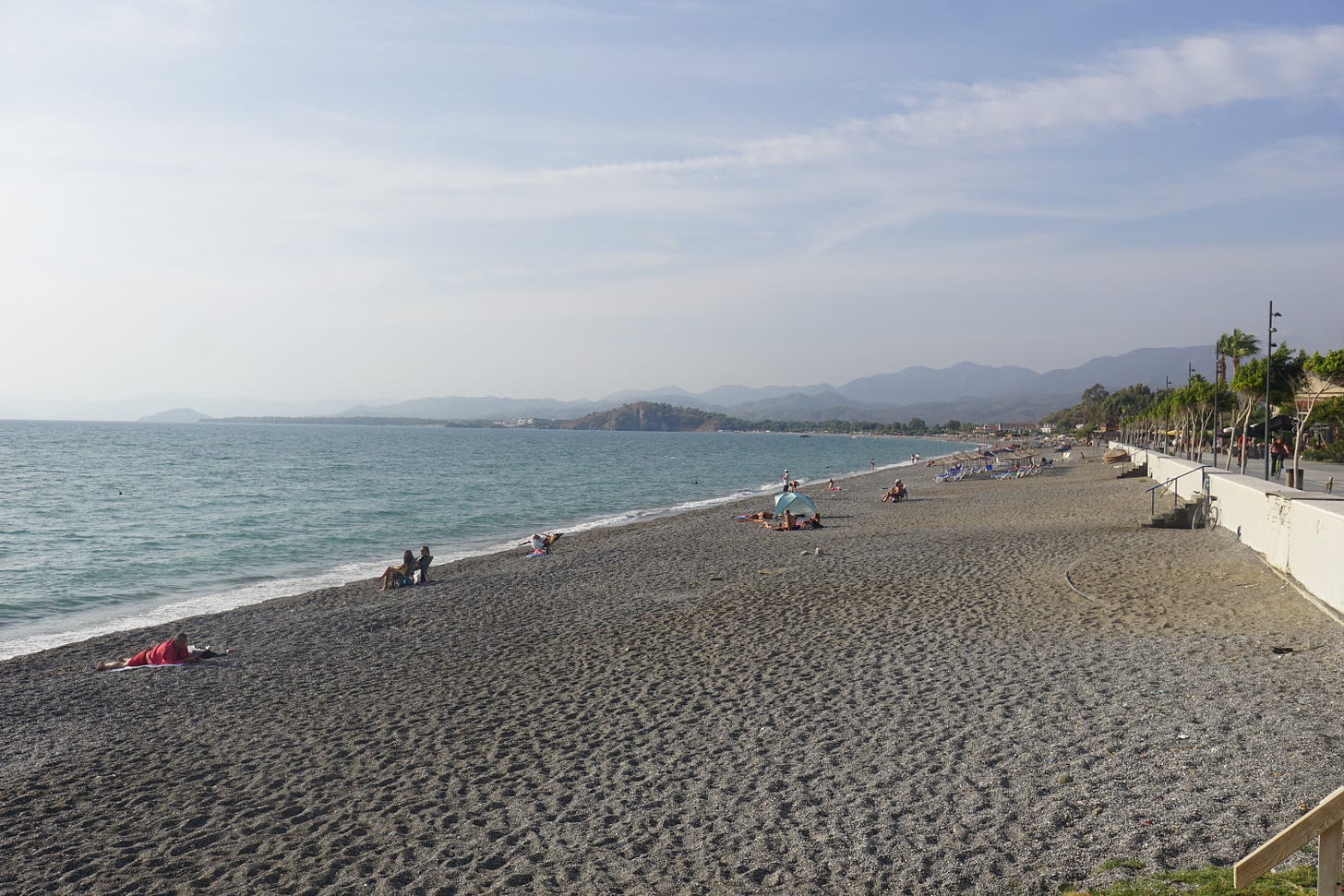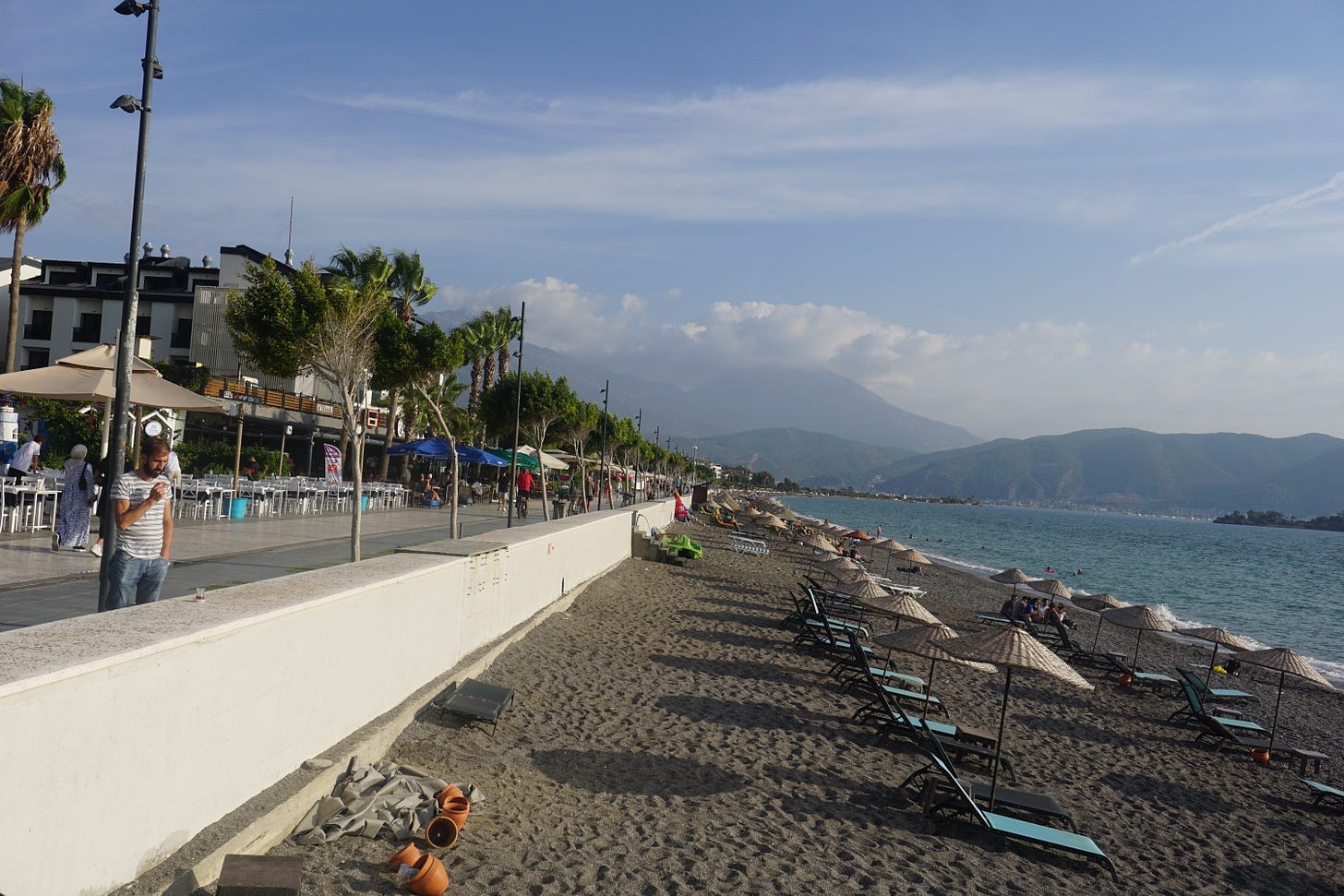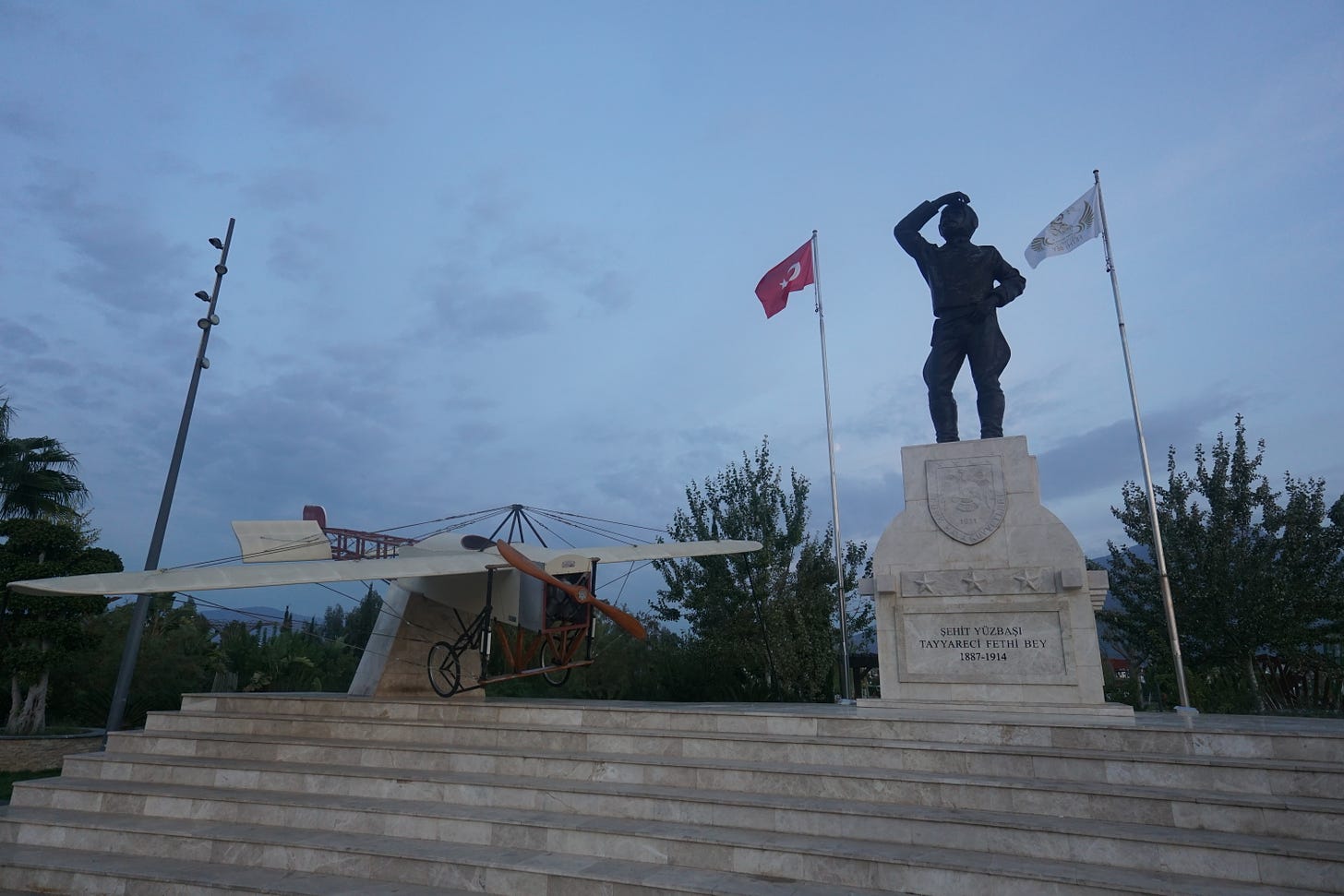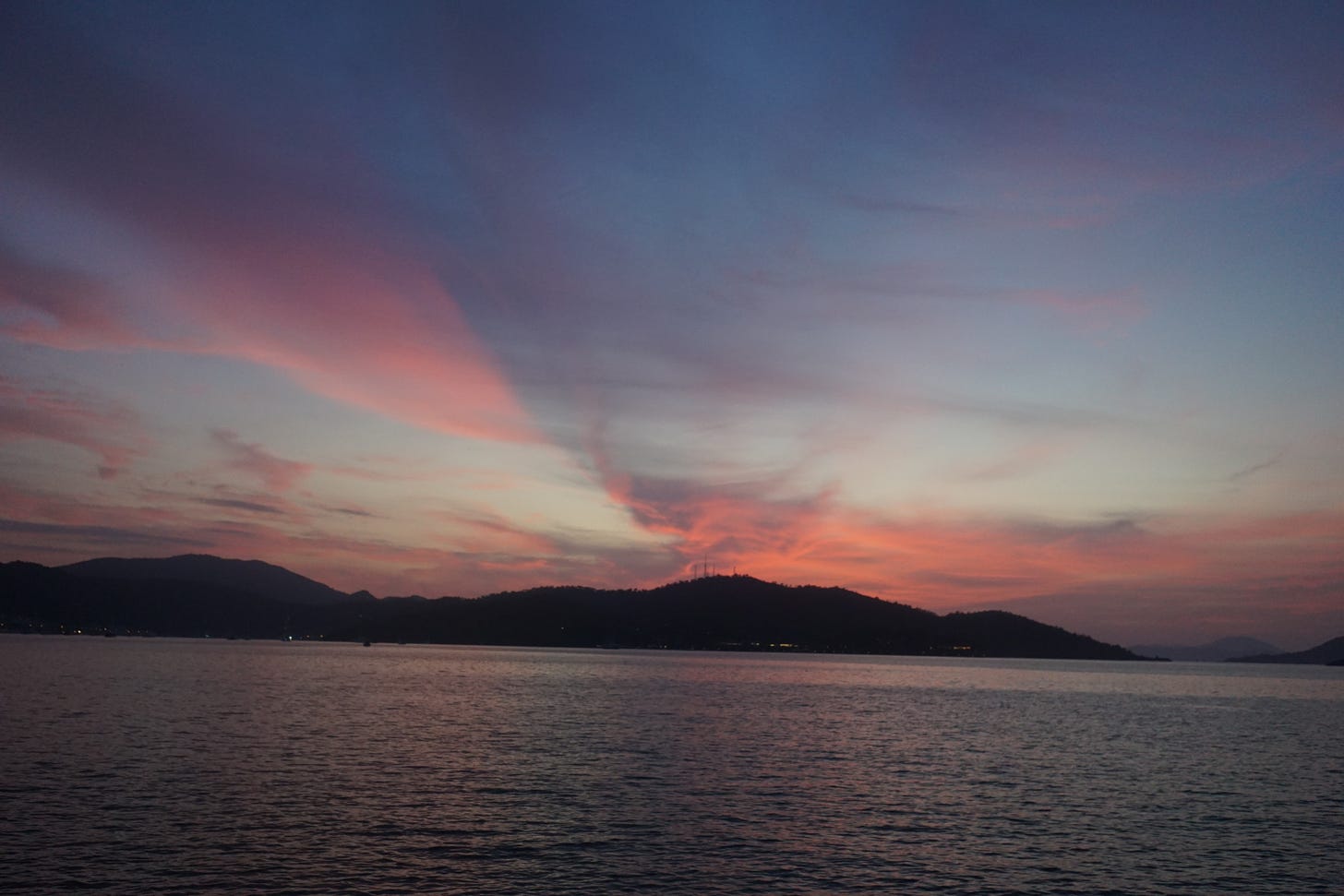Fethiye: Kayaköy and Çalış Beach
Up in the hills above Fethiye, there was a town called Carmylessus, established in the 15th century BC - it had a Greek name, because it was settled by the Greeks. More recently, it became known as Leivissi and for about 1,000 years it was a solidly Greek Orthodox town, despite the coming of the Ottomans. But then in the early 1920’s the Greco-Turkish war put an end to things - that led to the Treaty of Luasanne, under which the Christian Greeks were to leave Turkey, and an equivalent number of Turkish Muslims were to leave Greece (about 1.6 million Greeks had to leave - many had either been killed or fled earlier). There was supposed to be a population swap - all the residents of Leivissi would be replaced by Muslims, but for one reason or another, the Greeks left and no-one replaced them. The place did get a new name - Kayaköy.
It’s a fairly short ride up there in a dolmus (minivan) - most of my fellow passengers, however, are obviously more interested in the boutique hotels with their swimming pools or the nice restaurants because, apart from a French tour group, I see about six or eight people the whole time I am on the site. Despite the long period of occupation here, apparently the buildings only date back to the 1850’s. This is my first view, from a restaurant car park.
It takes me a wee while to work out how to get in - there’s a path behind a couple of shops: I pay the entrance fee (just 115 lira, about $5) and spend a couple of hours wandering around. These two shots are taken from when I am well up the path, looking west and then east.
There’s a church, but it has been closed off for safety reasons - the view of it is quite obscured, but I can see it a bit more clearly from above.
This, I guess, was the main road running through the village - not many cars made it up this way!
I get right to the top, then make quite a significant mistake. I had thought there is a track I could follow that would take me to a beach where I could catch a bus back to town - just follow the red arrows, my guidebook said. Well, I do find and follow the red arrows, which take me down some tricky terrain.
There is indeed a beach, but not the one I want - this one has no road access (I do see a rough track, but no vehicles, which give me my first clue that I’m going the wrong way, as there should be a dolmus every ten minutes).
I hear a tour boat come in with very loud music, but don’t expect they’ll give me a lift, so I have to head back the way I came.
I finish up back in the restaurant where I started, so take what I consider to be a well deserved beer. There’s some sort of book group meeting going on at the nearby circular table - there’s a big photo of a fellow and photos of several book covers, including one referencing Fethiye. Eventually I spot the man in the photo in the group.
I catch a couple of dolmuses and end up in the beach I wanted to walk to, Ölüdeniz - which featured in my last post. After dinner there, it was back to Fethiye, but with a very necessary stop - on the way out, I had noticed a chocolate restaurant. There’s a slightly awkward encounter - I say hello to the young lass behind the counter: she immediately summons another staff member, but I don’t actually want anything from him, so he’s as confused as I am - he had been called over because the first staff member has no English. I grab a menu and sit down, and a third staff member with perfect English sorts out my order - a chocolate brownie, with a chocolate pour over and strawberries.
Next day, after drinking a fair amount of coffee, I go to Fethiye’s main beach, Çalış Beach, a few km up the coast. I find it very boring - just bar after bar after bar and not a lot happening beachwise.
After a beer, I don’t really know what to do with myself, so decide to walk the 6 or 7 km back to Fethiye - the promenade you can see behind the wall runs the whole way, so it was actually quite nice. I just wish they had a few more seats along the way - all were occupied. Seeing a replica of an old plane, I have to investigate - I have no knowledge of Turkey’s early endeavours with flight.
This is Mr Fethi Bey - he was a navy man, but trained with the RAF in the early part of the 20th century before joining the Turkish air force. He was a pioneer, wanted to be the first man to fly from Istanbul to Cairo (about 1200 km) but crashed near Damascus, becoming Turkey’s first air martyr. I don’t know what his connection with Fethiye is, but the town was renamed in his honour in 1934.
It’s well and truly dark by the time I get back, but I enjoy the sunset.
Cheers!



